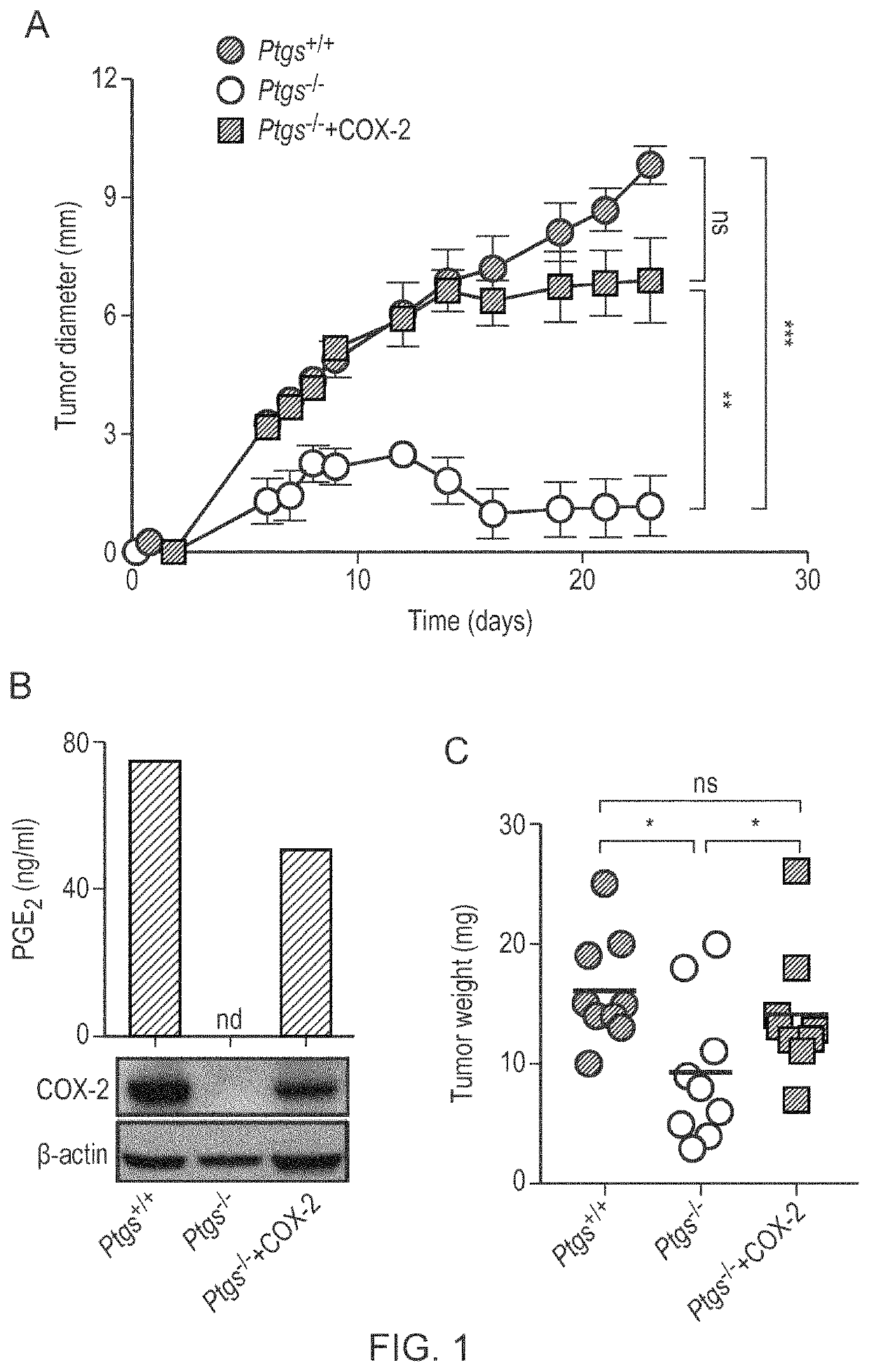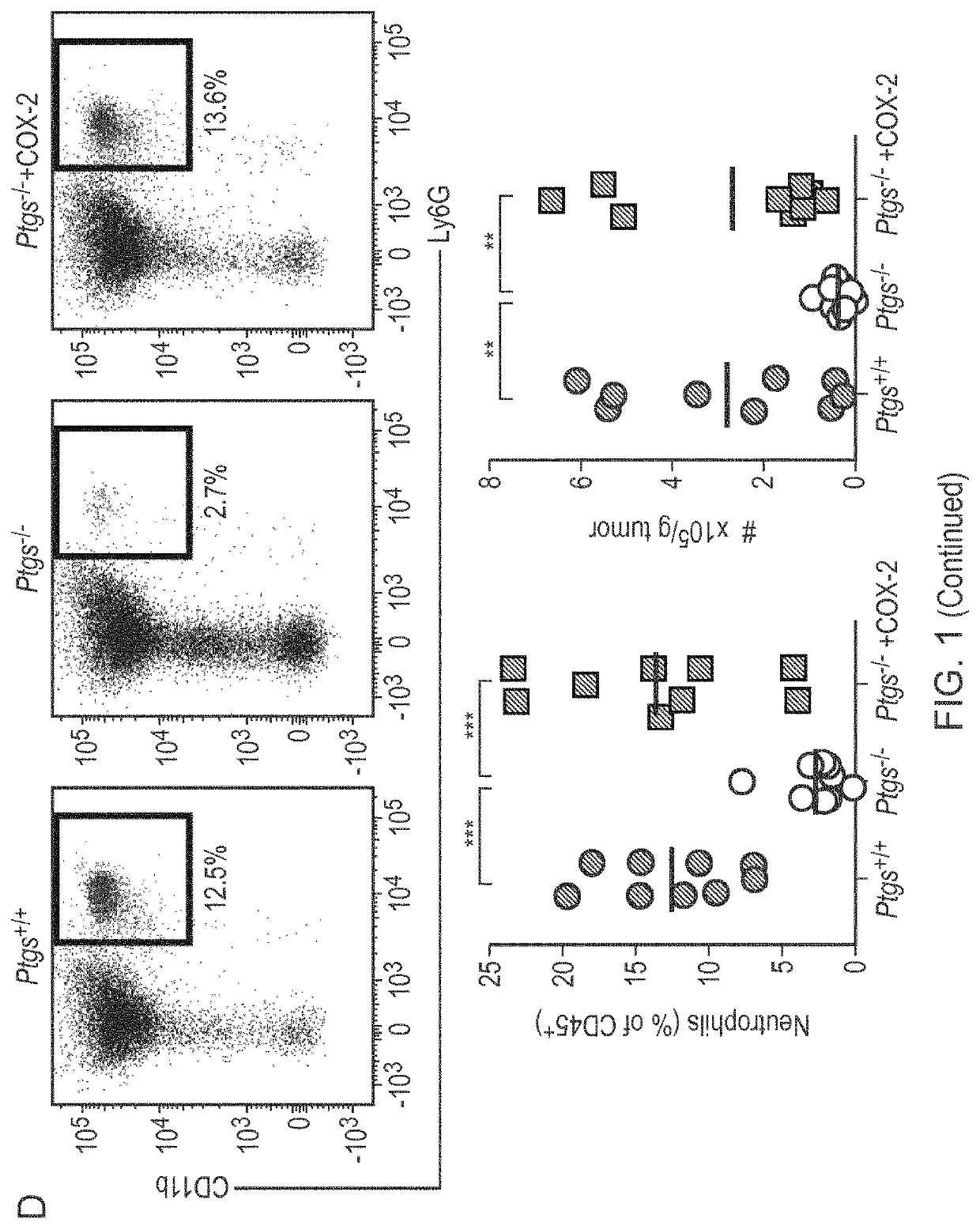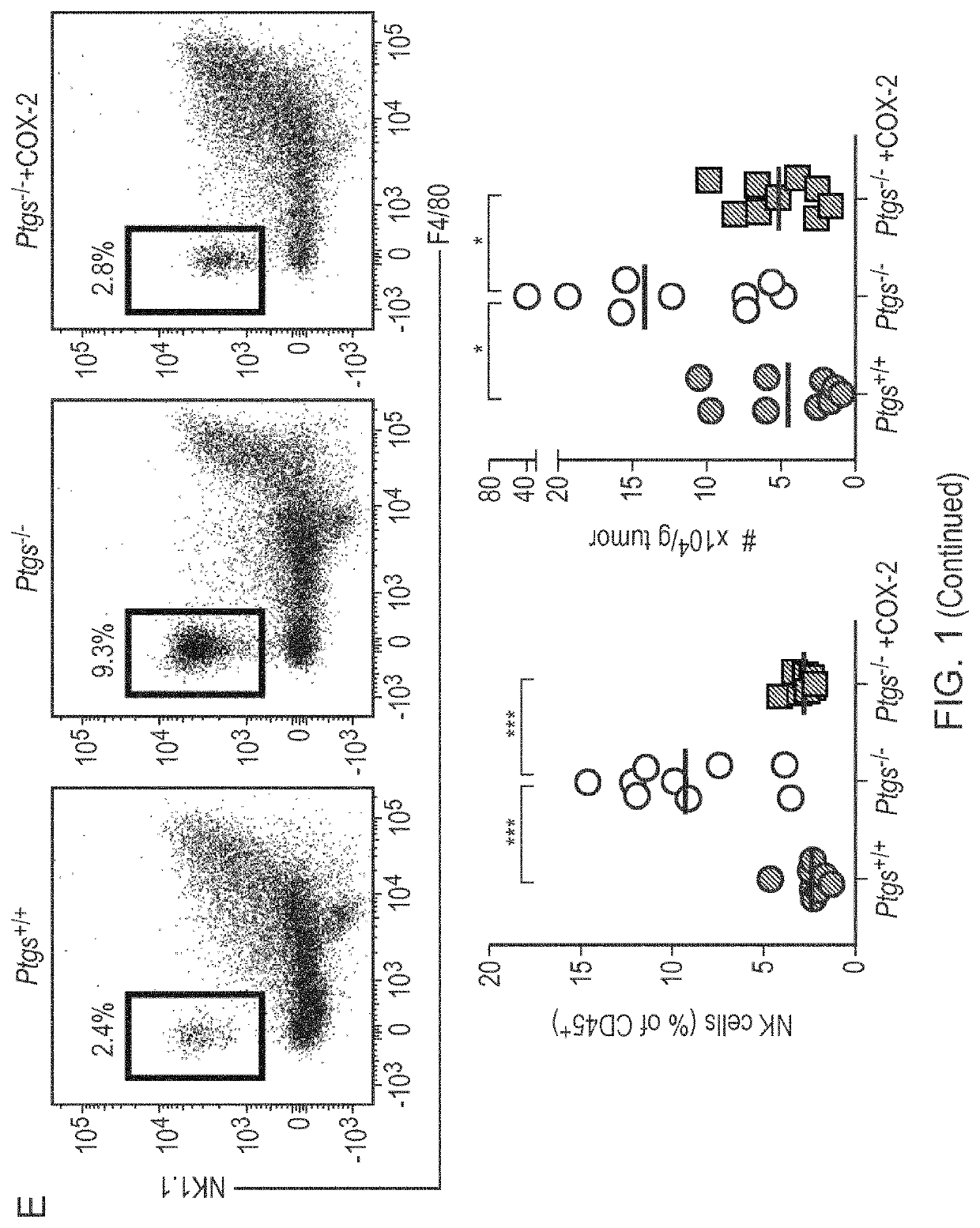Prognostic and treatment response predictive method
a predictive method and cancer treatment technology, applied in the field of prognostic and treatment response prediction methods, can solve the problems of inability to understand how antagonistic cancer promoting or inhibiting inflammatory tme are established during cancer development and progression, poor definition of signals and pathways that regulate the quality and quantity of the different elements of the inflammatory infiltrate, and impaired the ability of host immunocompetent, but not immunodeficient, to form progressive tumours. , to achieve the effect of promoting si
- Summary
- Abstract
- Description
- Claims
- Application Information
AI Technical Summary
Benefits of technology
Problems solved by technology
Method used
Image
Examples
example 1
eutrophil and Increased NK Cell Accumulation in Tumours Formed by COX-Deficient Cells
[0150]As previously reported (Zelenay et al., 2015), COX-deficient BrafV600E-driven melanoma cells generated using CRISPR-Cas technology invariably failed to form progressive tumours in immunocompetent mice whereas their COX-competent parental counterpart efficiently evaded immune elimination and grew uncontrolled (FIG. 1A). To definitively demonstrate that these categorical opposing tumour fates resulted from impaired COX activity and exclude the possibility that they were due to unforeseen off-target CRISPR effects, we restored COX-2 expression in COX-1 and COX-2 doubly deficient (Ptgs1− / − Ptgs2− / −) cells by retroviral transduction (FIG. 1A). The COX-2-regained melanoma cells secreted large amounts of PGE2 in vitro and reacquired the ability to grow progressively in wild-type syngeneic mice as their parental line (FIG. 1A, B).
[0151]Having confirmed that the increased immunogenicity of COX-deficien...
example 2
Neutrophil and Elevated NK Cell Numbers in COX-Deficient Colorectal and Breast Cancer Models
[0152]To assess whether the COX-dependent changes in immune cell composition at the tumour site were unique to the BrafV600E-melanoma model, we extended our analysis to MC38 colon carcinoma cells. These cells expressed COX-2 and produced PGE2, albeit at significantly lower levels than the melanoma cells (FIG. 2A). Still, CRISPR-mediated ablation of COX-2 totally abrogated PGE2 production and impaired their ability to form progressive tumours in immunocompetent hosts (FIG. 2A, B). As in the BrafV600E melanoma model, the growth profile of COX-2-deficient (Ptgs2− / −) MC38 cells in T and B-cell-deficient Rag1− / − or cDC1-deficient Batf3− / − mice was comparable to that of parental Ptgs2+ / + or COX-2-restored Ptgs2− / − cells. These observations uncovered a dominant role for cancer cell-intrinsic COX-2 activity in evasion of cDC1- and adaptive immunity-dependent control in this widely studied colon cance...
example 3
are Essential for Spontaneous or Therapy-Induced Tumour Control
[0156]We then addressed the role of NK cells, which have been frequently implicated in the control of hematological malignancies and metastasis but less so of solid tumours (Imai et al., 2000). With the exception of NK cells themselves, the overall immune cell composition of COX-deficient tumours was not evidently altered following NK cell-depletion (FIG. 3A and FIG. S3C). Nonetheless, NK cell-ablation led to a clear increase in Ptgs2− / − tumour size and weight comparable to that of COX-competent tumours, already noticeable at four days post cancer cell implantation (FIG. 3C). Strikingly, moreover, COX-deficient melanoma cells grew progressively as their parental cells in NK cell-depleted mice, with no apparent signs of innate or adaptive immune-dependent control (FIG. 3C). Analogous results were obtained with the MC38 colorectal model (FIG. 3D-F and FIG. S3D). We therefore conclude that NK cells are essential for both th...
PUM
| Property | Measurement | Unit |
|---|---|---|
| time | aaaaa | aaaaa |
| survival time | aaaaa | aaaaa |
| median survival time | aaaaa | aaaaa |
Abstract
Description
Claims
Application Information
 Login to View More
Login to View More - R&D
- Intellectual Property
- Life Sciences
- Materials
- Tech Scout
- Unparalleled Data Quality
- Higher Quality Content
- 60% Fewer Hallucinations
Browse by: Latest US Patents, China's latest patents, Technical Efficacy Thesaurus, Application Domain, Technology Topic, Popular Technical Reports.
© 2025 PatSnap. All rights reserved.Legal|Privacy policy|Modern Slavery Act Transparency Statement|Sitemap|About US| Contact US: help@patsnap.com



